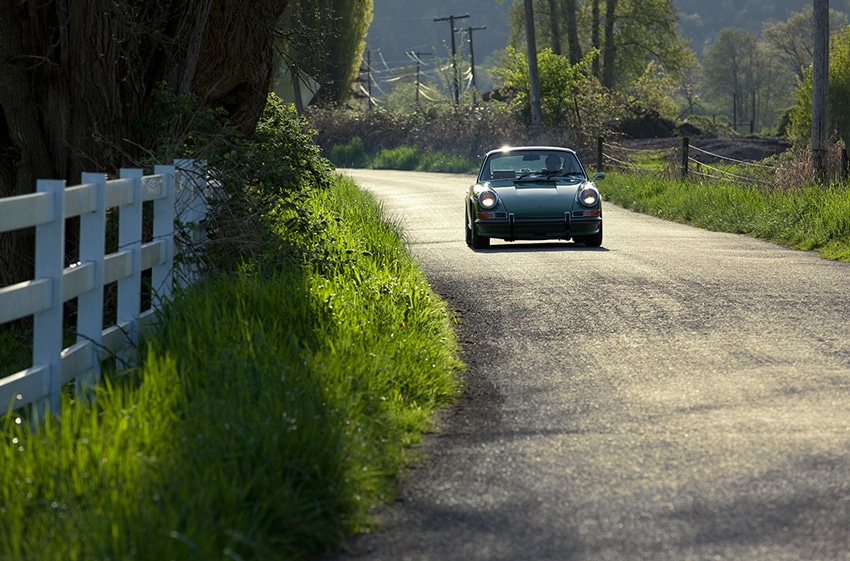Just a little more than 50K miles have registered on the speedometer of this Leaf Green 1972 911T. Yet, three years ago it was taken completely apart and refurbished to better than new condition. In the process, the pretty coupe was tastefully modified to provide a unique experience for the new owner. It looks stock, but it’s not.
So, why go in that direction? And what does it take to build a Porsche like this one? To answer these questions, we need to look at how the owner and this car intersected on their journey through time and what happened when they eventually did.
Scott Seemann of Blaine, Washington, grew up in Nebraska during the ‘60s. He remembers being shy, yet he later drove a hot-rod Corvette in high school. After graduating in 1971, he bought his first Porsche, a 914. That was quickly followed by the purchase of a 1964 356C coupe.
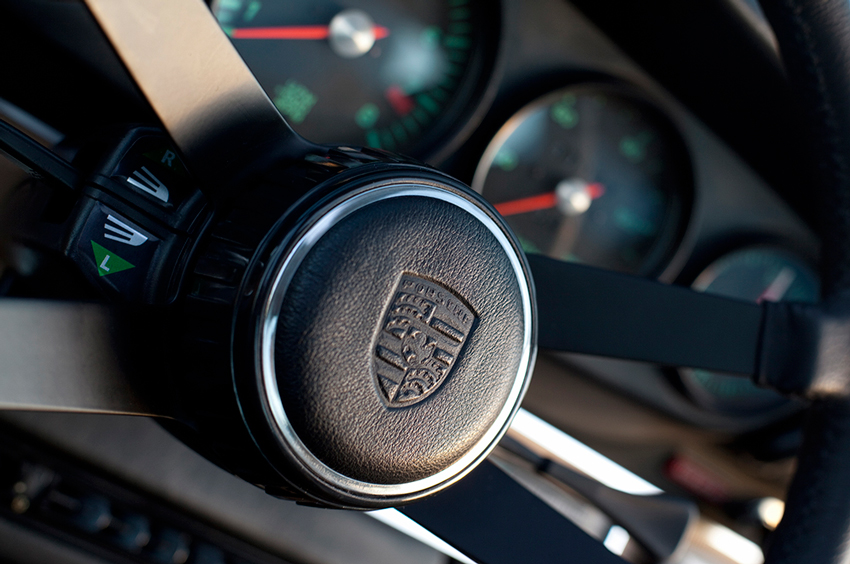
“I thought I’d died and gone to heaven,” recalls Seemann. “This Porsche didn’t rattle, it stopped well, it had great visibility, and it was comfortable to drive with plenty of legroom. I felt like it was built just for me.”
Seemann continued to drive that 356 at college in California, falling further in love with the beautiful design and no-nonsense mechanicals. But he soon returned home to the Midwest, Porsche-less. When he could finally afford another one in 1991, it was a low-mileage 1983 911 SC Targa.
He enjoyed the Targa but kept pining for the simplicity and driving experience of his old 356 coupe. Over the next several years, Seemann went through a series of 356s, some of which he still owns today. Eventually he came back to the 911 model, in the form of a brand new 1997 993.
“I liked the 993, but kept wondering if there was a 911 that was more like the nimble 356,” he explains. Upon moving to the Pacific Northwest in the late 1990s, Seemann was introduced to the modification skills of several builders in the area. He soon found a hot rod 1970 911T in Irish Green with a carbureted 3.2, 915 transaxle, and bigger brakes that had been assembled by Rothsport Racing in Portland. Next came the purchase of an all-original low-mile ’72 911S sunroof coupe in Silver.
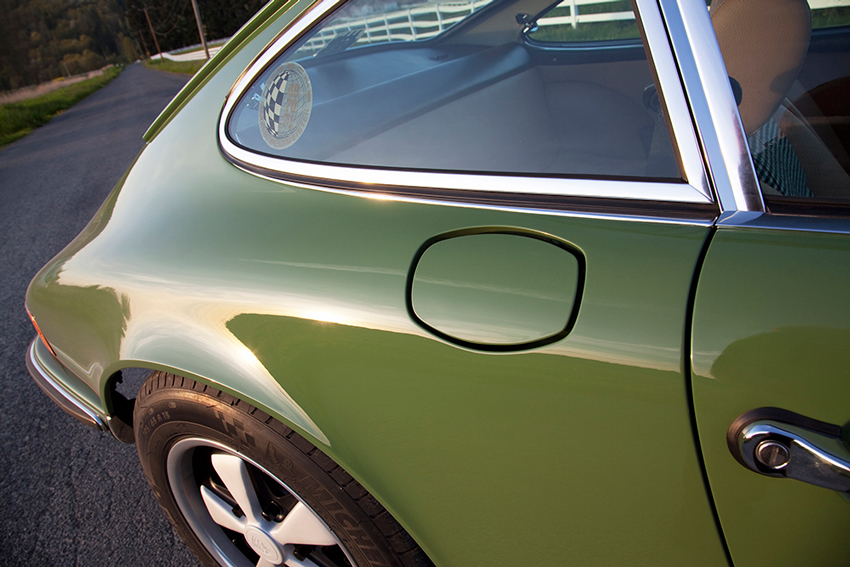
But one 1972 911 was not enough. “I wanted a new project – an early 911 that was somewhere between the hot rod 3.2L car and the stock 2.4S. The goal was to build a ‘72 coupe that would be more vintage in execution than the former and faster than the latter.”
The 1972 model year was a special one for the Porsche 911. It’s the only regular production model with the unique passenger side oil filler door. It still has the earlier chrome trim but also offers proper seatbelts, a modern dash, and a larger motor. Yet, Scott Seeman wanted more. More power, more brakes, and more comfort.
Seemann called every dealer in the country looking for a low-mile original paint ‘72 911 with a sunroof and no accident damage. Six months later, a store in Houston, Texas rang back. They sadly informed him that a car matching that description had shown up but was immediately sold. Amazingly, it turned out the buyer was a friend of Seemann’s, Gary Dixon, who lived nearby. After some prodding, Dixon sold the car to Seemann for a small profit.
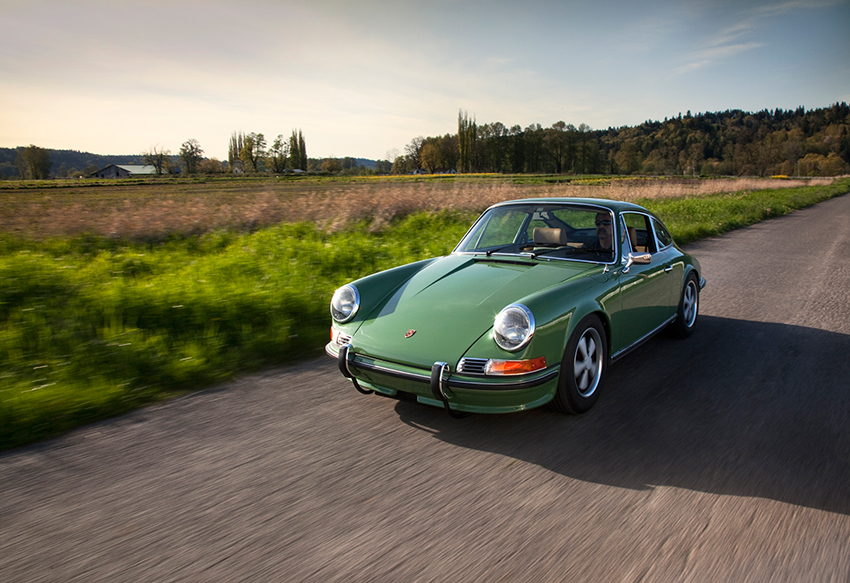
The original window sticker showed that 1972 911T #9112101794 was built to special order with Leaf Green paint, Tan interior, 5-speed transmission, forged alloy Fuchs, ‘S’ appearance group, tinted glass, and sunroof. The Porsche was originally imported into Baltimore, and then trucked to a Porsche/Audi dealer in Valley Forge, Pennsylvania. The first owner kept it for a couple of years and then sold it to a gentleman in Texas—where it spent most of its life.
When the ‘72T arrived at Terry Forland’s Racecraft shop in Woodinville, Washington it had a ‘Kermit the Frog’ stuffed doll in the rear seat, a citizens band radio, and a green ‘Kermit’ plaque on the dash. All were immediately removed.
What Forland didn’t remove: Five rare 911R 15×7-inch Fuchs that came on the car. Unfortunately, the car’s front end was sandblasted from road debris and the roof was sun baked. Try as they might, Forland and his crew could not salvage the exterior paint.
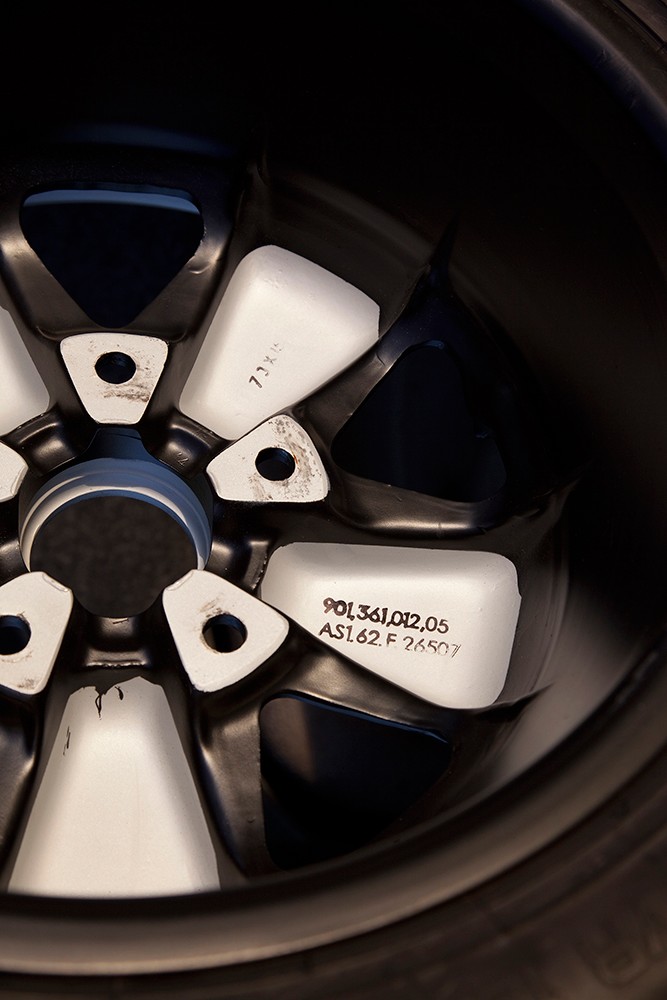
Seemann requested that Forland preserve as much of the original color as possible. To this end, the 1972 oil filler recess, the underside of the lids, and the door jams were left alone. Stephen Clapsaddle of nearby Liquid Reflections spent countless hours prepping the car and matching new paint to the existing areas.
Next came the long list of subtle modifications Seemann wanted. Of course, the list kept growing as progress was made, extending the completion date. “The build became a kind of carte blanche makers special,” remembers Forland. “The approach was to make a very low key, but cool looking, hot rod using as many unique period parts as possible. It took lots of patience and management skills to build.” (See addendum for details)
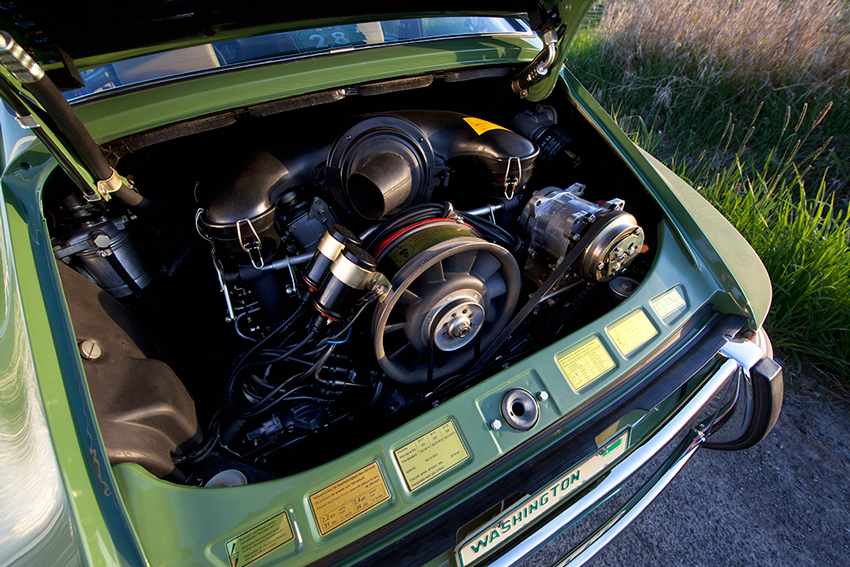
Remember that Seemann wanted a ‘72 coupe that was vintage looking but faster than stock. So, a 2.67L twin plug motor was specified. It produces significantly more torque than the 2.4-liter, yet remains relatively small in displacement and winds up quickly. For stopping power, 930 calipers and rotors were substituted. Inside the car are better amenities like more comfortable sport seats, ventilation, and effective air conditioning.
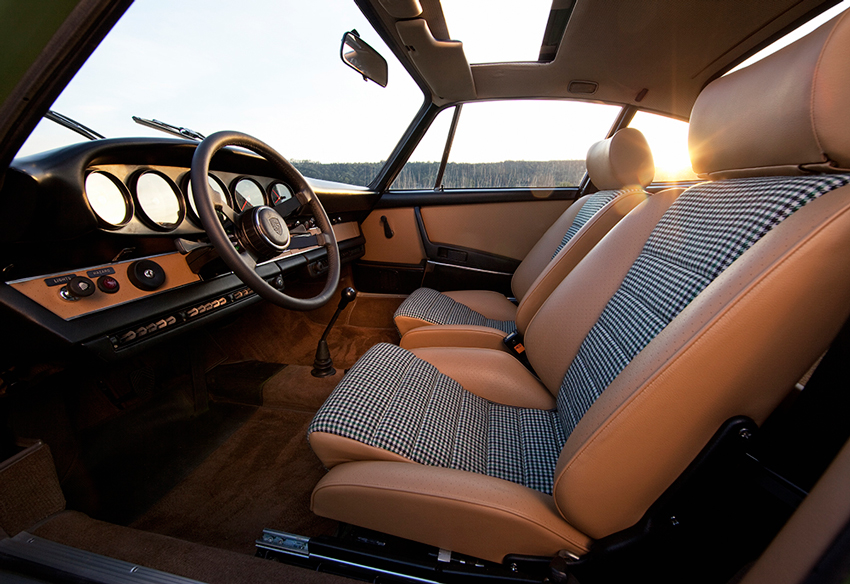
The finished product has that elusive “something” that appeals to purists and new enthusiasts alike. Perhaps it’s the period ‘70s color, the refined interior, the perfect stance, or its tight, non-flared, almost modern lines. The Leaf Green color with tan interior also makes an elegant statement. That’s a good thing in the eyes of Seemann, who enjoys making a fresh start without calling attention to himself.
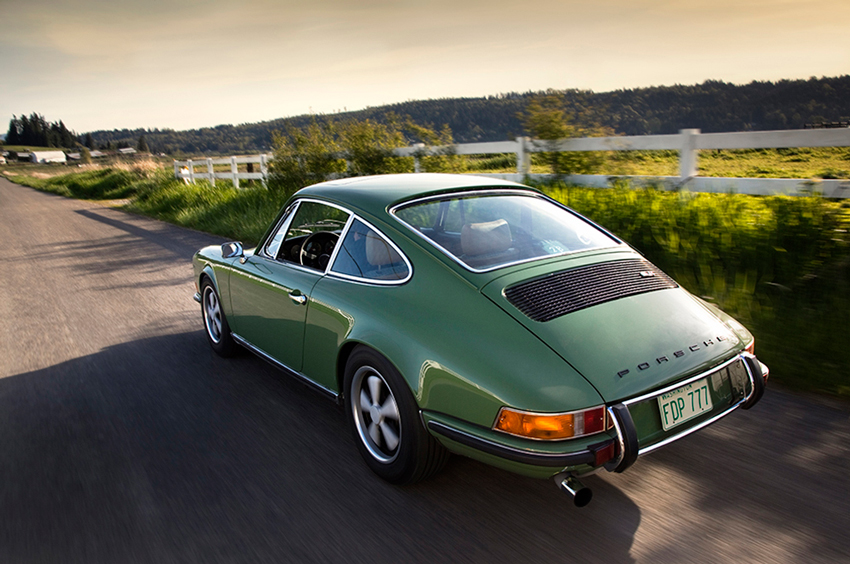
Addendum: So What Makes This Car Special?
- This 2.67-liter displacement combined the long-stroke crank from a 2.4L with 2.8 RSR connecting rods and 89-mm Mahle racing piston and cylinders. Porsche originally used the 89-mm bore for the ‘70-72 911ST racecar built for the GTU [under 2.5-liter] class using the 2.2L short-stroke crank. On a long-stroke 2.4 crank, this combination increased displacement and torque. Its 10.6:1 compression ratio demanded twin plugging, resulting in snappier throttle response.
- Ampilux/Hella twin-bulb headlights provided an older 356-style touch. And with twelve wires, twin distributors and RSR-style ignition coils, the engine bay gained the desired look of a vintage factory sports purpose car.
- Typ 930 brakes were used because of the bigger motor. These brakes were adapted to fit the unique 15×7-inch 911R wheels, which have a different arc on the rim’s back side. Terry Forland ended up machining everything that bolted on, including the calipers, thermostat clasp, studs, and spacers. Then he added more negative rear camber for the Michelin 195-60×15 tires to clear the fenders.
- A 1969 912 coupe front quarter vent window and an aftermarket right-hand-drive door pull for the driver’s side provided greater interior comfort. A Kuehl A/C upgrade kit replaced the original York/Behr system, complete with Griffith 507 rotary piston compressor, evaporator, high-speed fan motor, and condenser.
- Seemann retained the original carpets, rear seats, headliner and dealer installed A/C venting. The rest was restored with perforated tan vinyl. Custom houndstooth sport seats with lumbar support and perforated bolsters were specified, as was a radio surround painted tan to match. Custom green lettered gauges and a 380mm ‘ST’ steering wheel with leather horn button complete the cabin.
Text and photos © 2015 Randy Wells. All Rights Reserved.

